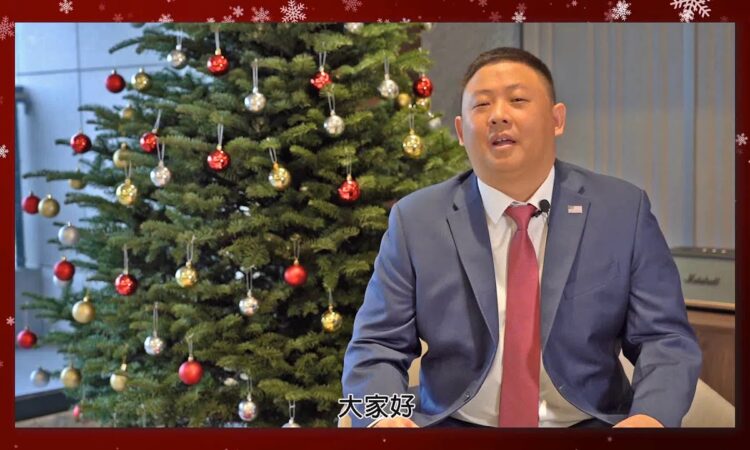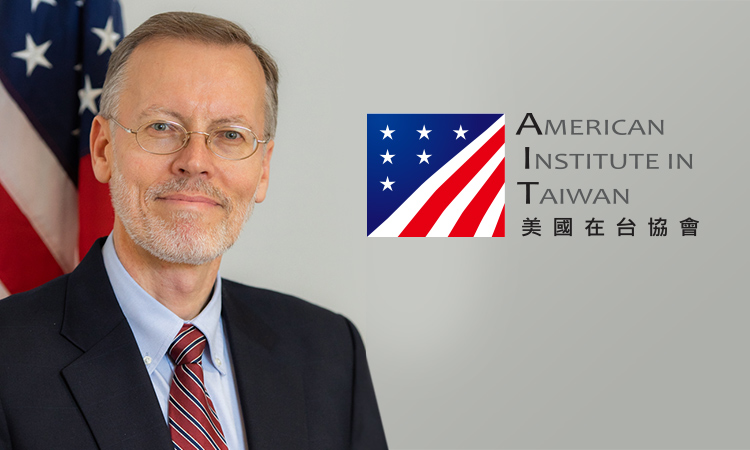March 4, 2019
“The 40th Anniversary of the Taiwan Relations Act
And What That Means”
AIT Director W. Brent Christensen
Remarks at Stanford University
March 4, 2019
Good afternoon. It is a great pleasure to be here today to participate in the Taiwan Democracy and Security Project. We need occasions like this for policy practitioners and scholars to put our collective heads together and wrestle with the most complex challenges of the 21st century. And who could question that the promotion of democracy and the preservation of security across the Taiwan Strait are among this century’s most complex challenges in the Indo-Pacific region, if not the entire world. The good news is this: we can take comfort in having managed these challenges fairly well for the past four decades, and I remain optimistic that the next 40 years will have good things in store.
I have been asked to reflect on the significance of the 40th anniversary of the passage of the Taiwan Relations Act, a milestone we will mark in April. But before we reflect on what exactly the TRA has meant for Taiwan and for U.S. relations with Taiwan, I think it is important to highlight the law’s broader significance in purely American terms. What I mean is this: the TRA is a textbook example of our constitutional system working at its finest and in accordance with its brilliant design to allow Congress to have a voice on important foreign policy issues. Indeed, we owe the congressional leaders of that time a great debt of gratitude for enacting his inspired piece of legislation.
It is useful to recall that on December 15, 1978, when President Jimmy Carter announced that the United States would establish diplomatic ties with the People’s Republic of China on January 1, 1979, it came as a surprise to almost everyone in the U.S. government – including Congress. When the Carter administration later submitted the “Taiwan Enabling Act” to provide for continued “unofficial relations” with Taiwan, Congress swiftly rejected it, deeming it too weak and lacking sufficient protections for U.S. interests vis-à-vis Taiwan. As Senator Frank Church, Democrat from Idaho, argued, the Taiwan Enabling Act was “woefully inadequate to the task, ambiguous in language and uncertain in tone.” Other senators offered similar criticisms.
Many members of Congress sought a clear promise that Taiwan’s future would resolved peacefully and argued that this was a key issue to be addressed in any legislation discussing Taiwan’s future and the United States’ future unofficial relationship with Taiwan.
When the TRA was finally put to a vote in Congress, it was passed with overwhelmingly bipartisan support in both chambers — only six Senators voted against it. The TRA remains such a landmark piece of legislation four decades later because it cemented into our domestic law the U.S. expectation that Taiwan’s future be resolved peacefully.
In 1979 when the TRA was passed, Taiwan had not yet liberalized or democratized. It was a one-party state under martial law. Human rights abuses were serious and ongoing, as would be on vivid display during the Kaohsiung Incident later that same year. Yet as one can see in the provisions of the TRA, the United States saw Taiwan’s tremendous potential and put in place a framework to ensure that we could continue to work with Taiwan and encourage its evolution toward the modern, prosperous, and democratic partner it has become today. As the TRA states: “The preservation and enhancement of the human rights of all the people on Taiwan are hereby reaffirmed as objectives of the United States.”
Recognizing the PRC as the legal government of China and establishing diplomatic relations with Beijing meant that the United States would henceforth conduct its relationship with Taiwan on an unofficial basis. However, the TRA made abundantly clear that unofficial does not mean unimportant. These are my words, not those of the TRA, but I believe the phrase captures the drafters’ intent quite accurately. The law they crafted set forth a vision of how the U.S.-Taiwan relationship could be unofficial while retaining important features and preserving substantial ties across a wide range of areas. Remember, this was a period of considerable confusion about what the change in recognition would mean for all three entities involved. Without the TRA, it is entirely possible that the relationship with Taiwan may have never recovered from the setback that the switch in recognition represented to Taipei at the time.
When former Congresswoman Pat Schroeder recently visited Taiwan, she told me that when she and her Congressional colleagues were finalizing the text of the TRA, they hoped it would provide the necessary legal support and guidance that would maintain the U.S.-Taiwan relationship. It did much more. The framework they set into law was intended to affirm the strategic importance of Taiwan as it was then, but most importantly, it provided a foundation for the relationship to grow much stronger over the years as Taiwan transformed itself.
The significance of certain elements of the TRA was evident from the beginning, while others have been easier to discern with the passage of time. The law that Congress passed, and President Carter signed, represented a robust approach to maintaining unofficial ties with Taiwan. Chief among these, Congress established a policy of continued support for Taiwan’s self-defense, including arms, saying the United States would supply “such defense articles and defense services in such quantity as may be necessary to enable Taiwan to maintain a sufficient self-defense capability.”
The law also included a policy statement of American support for Taiwan’s defense, essentially equating a threat to Taiwan’s security with a threat to regional peace, thus constituting a clear threat to U.S. interests. The TRA established that the United States would consider any military action, boycott, or embargo against Taiwan to be “a threat to the peace of the Western Pacific area and of grave concern to the United States.” “Grave concern” is the kind of phrase that we diplomats use when you really get us riled up.
I think there is no question that the TRA has stood the test of time. But now, standing from the vantage point of 2019 and looking back at the TRA of 1979, what does the experience of four decades tell us about the United States today and its relations with Taiwan at present? Does it tell us anything about the future?
First of all, it tells us that no matter how imperfect we are, the United States is not a fair-weather friend. While we, like other nations, do and must calculate our policies and actions based on careful consideration of the cold, hard facts, the United States does not stop there. We do not define our interests solely in terms of dollar signs. We do not measure the success of our policies by how well they conform to global trends and the fashionable views of the day. We have our own inner compass. It aligns, again imperfectly, with the magnetic pull of those first order principles that emerged from the great wisdom and traditions that inspired our Founding Fathers and the seminal documents they left behind. In my view, the TRA is an outward manifestation of that inner compass.
In the context of Taiwan, President Ronald Reagan often referred to our multi-layered commitment as the “moral and legal obligations in the Taiwan Relations Act.” Notice which of the two came first in President Reagan’s mind. Moral then legal obligations. In reviewing the historical record in preparation for this speech, I was provided a declassified memo from March 1982 on which Reagan had written the following comments to then-Secretary of State Alexander Haig: “We keep our promises to Taiwan. Period.” It is hard to be much clearer or more emphatic than that.
To President Reagan’s point, the United States remains fully committed to implementing all of the provisions of the TRA, including those on arms sales and security. This contributes to stability across the Taiwan Strait by enabling Taiwan to maintain a strong deterrence capability and by giving Taipei the confidence needed to pursue constructive interactions with Beijing.
As a Pacific power with global responsibilities and interests, the United States has a natural interest in the preservation of peace throughout the Indo-Pacific region. Stability in the Taiwan Strait is essential to that goal. It is this enduring interest in Taiwan’s security and regional peace that undergirds U.S. policy, as articulated in the TRA, not only to provide Taiwan with arms of a defensive character but also to maintain “our capacity to resist any resort to force or other forms of coercion that would jeopardize the security, or social or economic system of the people on Taiwan.”
Secondly, four decades of the TRA have taught us that the status quo across the Taiwan Strait, while far from ideal to many of those affected by it, is a workable arrangement that allows for all parties involved to prosper and for Taiwan to preserve those things that make it so special and distinguish its success from many of its neighbors. And by the way, it is also through this status quo that mainland China has enjoyed arguably the greatest flourishing in material prosperity for its people in its long and storied history.
Taiwan’s leaders from across the political spectrum have consistently indicated that they cannot accept any arrangement across the Strait that would compromise Taiwan’s hard-earned democracy and the fundamental freedoms of the people on Taiwan. As one might expect in a democracy, public polling strongly supports this view. It virtually goes without saying that the United States respects and understands Taiwan’s insistence that its democracy and all of the freedoms it entails are non-negotiable. The United States will continue to oppose unilateral actions aimed at altering the status quo across the Taiwan Strait, including any resort to force or other forms of coercion. Simply put, the status quo is worth protecting.
To be clear, we recognize its limitations. Much has changed on the ground over the last four decades. The status quo certainly leaves the demands and dreams of both sides unsatisfied to one extent or another. But what it has done well is preserve the peace, and as anyone who has studied history can tell you, that is no small feat.
In this regard, the United States appreciates President Tsai’s determination to maintain the status quo and her pursuit of stable ties across the Strait in the face of escalating pressure from Beijing. In the nearly three years since her inauguration, she has shown herself to be a responsible and pragmatic leader.
Thirdly, the experience of four decades has validated the U.S. vision that Taiwan would reach its full potential and become an indispensable partner to the United States. Since 1979, the United States and Taiwan have built a comprehensive, durable, and mutually beneficial partnership, grounded in our shared interests and, increasingly over time, our shared values. Our partnership today truly runs the gamut: security, trade, investment, education, cultural exchange, travel and tourism, law enforcement, and international cooperation on critical issues such as combatting ISIS and human trafficking. The list goes on and on. A common commitment to core values like support for democracy and human rights have brought us even closer. Taiwan’s transformation from an island ruled by martial law to a beacon of democracy is one of the most compelling developments of the late 20th and early 21st centuries – a great accomplishment for the people of Taiwan that inspires not just Americans, but many others around the world.
I have had the great privilege of witnessing Taiwan’s transformation up close. When I first went to Taiwan in the late 1970s as a missionary, a climate of repression was the day-to-day reality for many of its residents, particularly those whose families had called Taiwan home for generations, if not centuries.
By the time I returned to Taiwan for my first overseas tour in 1989, martial law had been lifted and liberalizing reforms were starting to take off. Many years later as Director of the Office for Taiwan Coordination, as the AIT Deputy Director, and finally now as AIT Director of AIT, I have seen Taiwan continue to mature into a model for others. Peaceful transfers of power between competing parties have become a routine matter.
Finally, looking forward to the next 40 years, I certainly cannot predict the specifics of what will happen, but I am confident of a few things. Namely, the United States and Taiwan will continue to grow closer. U.S. commitments to Taiwan and to the region more broadly will not wane or wither. Taiwan will continue to grow stronger and its vibrant democracy will remain central to its continued success. And as was articulated by Vice President Pence in a speech last October, “America will always believe that Taiwan’s embrace of democracy shows a better path for all the Chinese people.”
In conclusion, all of my historical and philosophical musings today can be summed up quite simply: we are and will remain a true friend of Taiwan, and the obligations that we have undertaken in the course of that friendship, as enshrined in the TRA, are rock solid.
In the short term, and I really mean short-term, AIT will finally move into its new, state-of-the-art office complex in Taipei that we dedicated last summer. This magnificent facility serves as an important, and literally concrete, symbol of the U.S. commitment to Taiwan, of the close ties that link the people of the United States with the people of Taiwan, and of the comprehensive and durable partnership that we share.
In addition to the big move, for each month this year, we will be celebrating a different aspect of our relations with Taiwan through a variety of events and programs. This month we are celebrating the shared values that remain integral to our close collaboration. In April, we are planning a large-scale event to commemorate the enactment of the TRA and to celebrate the partnership that has developed in the decades since. We hope that many of you will be able to join us for these events and make the most of this special anniversary.
Let me thank you again for the invitation to share my thoughts with you today. I would also like to conclude by thanking you all for the work that you do to improve our understanding of the security threats facing Taiwan and to help us devise effective strategies for countering those threats. Your work is truly invaluable.
##


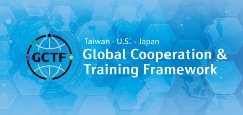




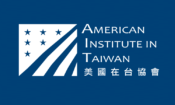

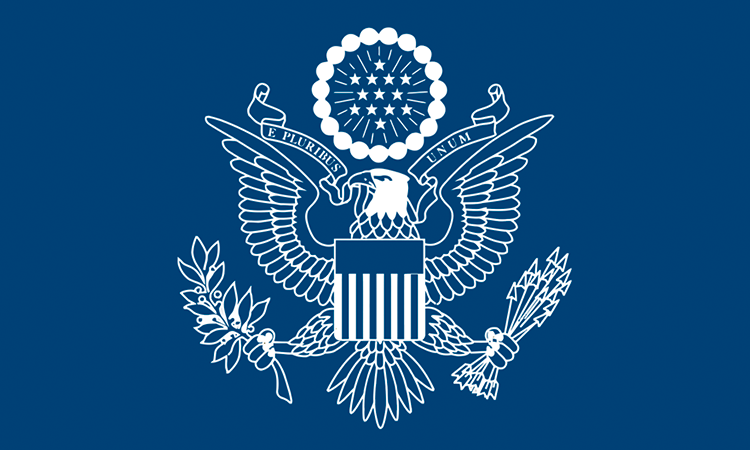





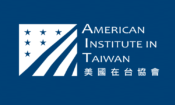
![Video Thumbnail [Recovered]-01](../wp-content/uploads/sites/269/Video-Thumbnail-Recovered-01-1-750x450.jpg)
